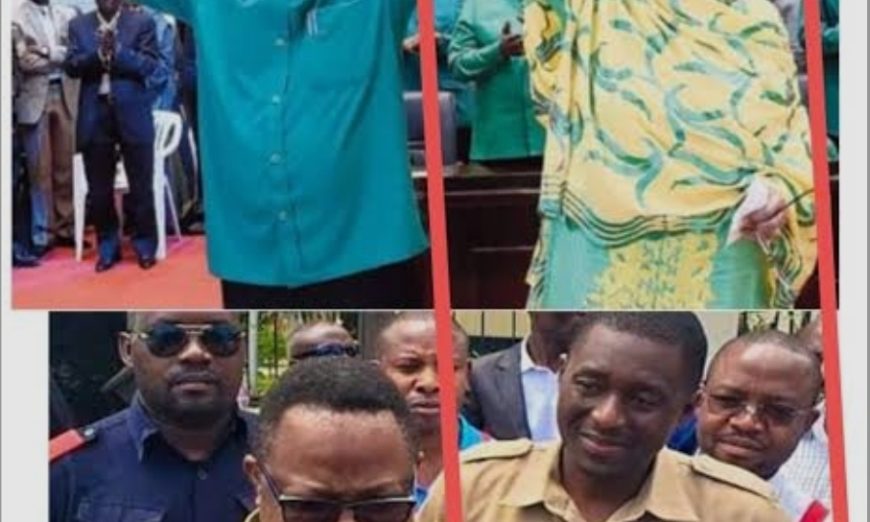IN a rare twist of history, and for the first time ever, Tanzania’s 2025 general election features two major presidential flag bearers who were once running mates, both hailing from Zanzibar: Samia Suluhu Hassan of CCM and Salum Mwalim of CHAUMMA.
Beneath this symmetry lies a complex tale of power struggles, internal fractures, digital manipulation, and the collapse of a national reconciliation effort that once promised to reshape Tanzania’s political landscape.
From running mate to president
When John Pombe Magufuli died suddenly in March 2021, his deputy, Samia Suluhu Hassan, rose to the presidency – a historic milestone that made her Tanzania’s first woman head of state. Her early gestures of openness and dialogue marked a dramatic break from Magufuli’s authoritarian legacy.
Among her earliest and most celebrated initiatives was the Maridhiano process – a political reconciliation effort between CCM and the opposition, especially CHADEMA. For a brief moment, the country dared to hope for democratic renewal.
But those hopes were short-lived. Within CCM, Samia’s outreach ignited a storm. Magufuli’s loyalists – often described as “royalists” – accused her of diluting the late president’s hardline stance and betraying the movement that had kept the opposition at bay.
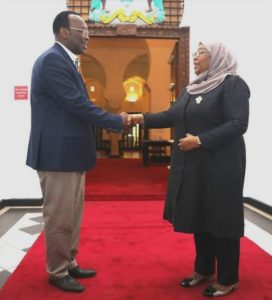
The promise and the price of Maridhiano
The Maridhiano (reconciliation) process was born from exhaustion. Within CHADEMA, the pro-Maridhiano camp believed that after six consecutive years of state brutality under Magufuli, the party desperately needed a healing space – a chance to regroup, rebuild, and breathe.
Through the two-year dialogue process, they managed to secure a few tangible gains: The revival of public rallies, banned since 2016; the acquittal of more than 400 CHADEMA members jailed on political grounds; the return of political refugees, including Tundu Lissu, Godbless Lema, and Ezekia Wenje; the restoration of government subvention that had been denied since 2020.
Yet, the biggest promise – constitutional reforms – remained elusive. Delays and mixed signals from the government convinced many that there was no genuine political will behind the process.
This became the turning point. Within both CCM and CHADEMA, new factions emerged, united by one cynical belief that “leniency is weakness.” That spirit shaped the tone of Tanzanian politics leading up to the 2024 local government elections, where Maridhiano had completely disappeared from the political vocabulary. Brutality returned at its zenith.
Digital warfare and the death of dialogue
The end of Maridhiano was not just a result of boardroom betrayal – it was also a battle fought and lost online.
Anti-Samia elements within the state infiltrated the opposition’s digital spaces, particularly Clubhouse and X (formerly Twitter) Spaces, posing as CHADEMA sympathizers. They exploited the party’s heavy reliance on social media to manipulate narratives and fuel internal mistrust.
Their mission was simple: to turn CHADEMA’s supporters against Maridhiano by portraying reconciliation as capitulation. They painted dialogue as betrayal and compromise as cowardice – and they succeeded.
By 2023, the digital disinformation campaign had poisoned CHADEMA’s internal discourse so deeply that trust between the two camps – Maridhiano supporters and confrontational militants – completely collapsed.
Then came the DP World investment controversy. When Freeman Mbowe, then Chadema chairman, criticized the deal, remarking that Zanzibar’s exemption reflected favouritism, CCM hardliners struck back. Word is out that they told Samia:
“We warned you about these people and their Maridhiano schemes. Now you see how they insult you – because you’re a woman. They don’t respect you. They don’t fear you like they did Magufuli. The only way is to deal with them squarely, mercilessly.”
That was the final straw. The anti-reconciliation faction within CCM seized control. Maridhiano was buried.
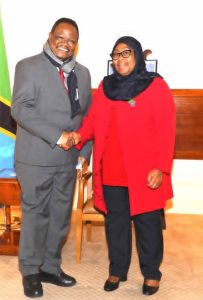
Power struggles and political sabotage
Within both CCM and CHADEMA, the reconciliation process threatened established power centers. The initiative had gradually begun to brand Samia Suluhu and Freeman Mbowe as the political faces of moderation and reform – a symbolic pairing that many within both camps saw as dangerous.
Their internal rivals, eyeing the 2025 presidential nominations, viewed the growing “Maridhiano” image as a direct threat to their ambitions. To them, the process had to die. And it did.
For Samia, the collapse of Maridhiano created an immediate political dilemma. Mind you, she had entered the presidency without her own strong faction inside CCM. The ruling party was still dominated by Magufuli’s loyalists, who questioned her legitimacy and resented her conciliatory tone. To survive, she sought to appease and neutralize that camp while rebuilding CCM’s grassroots energy ahead of the 2025 elections.
Her appeasement strategy revolved around three key goals. Firstly, it sought to reunify CCM’s fractured power base by restoring confidence among Magufuli’s hardliners – often referred to as the “royalists.” Secondly, it meant reinforcing her authority within state institutions – especially the intelligence, police, and regional administration – where loyalty had remained aligned with the late president.
Thirdly, the strategy sought rebranding her presidency as a continuation, rather than a repudiation, of Magufuli’s legacy, in order to protect herself from internal rebellion.
To achieve this, Samia readmitted Magufuli’s former political enforcers into government – the same notorious figures once known for silencing dissent. She reinstated them to positions of influence in law enforcement, security, and local administration.
These operatives, notorious under Magufuli, were known as watu wasiojulikana — “the unknown people” – a euphemism police used whenever citizens were abducted and no explanation followed.
In their return, they brought back the same tools of intimidation and fear: surveillance, arbitrary arrests, and abductions. Under the pretext of protecting Samia from opposition “disrespect,” they gradually began to dominate the state apparatus.
But the strategy backfired spectacularly. Even within CCM, Samia’s effort to appease Magufuli’s loyalists – her goal number one – never fully succeeded. The same people she empowered to stabilize her presidency eventually turned into her most dangerous saboteurs.
As the election process began, internal disagreements over her candidacy resurfaced. Magufuli’s camp still viewed her as a transitional leader – not a rightful successor. This internal hostility and competition contributed to the demise of former Ambassador Humphrey Polepole, who publicly criticized Samia and the ways she attained the party’s candidacy.
The so-called “protection” offered by the watu wasiojulikana soon became a thorn in Samia’s flesh. Their heavy-handed approach – abductions, arbitrary arrests, and intimidation – reignited public fear, tarnished her reformist image, and reinforced the perception that she had become a replica of Magufuli.
In short, the very machinery she revived to protect herself ultimately sabotaged her leadership.
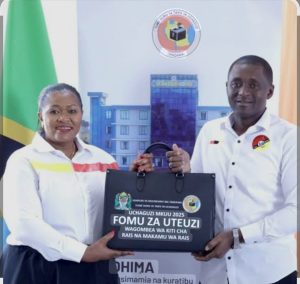
Salum Mwalim’s rebellion and Lissu’s strategic trap
On the opposition front, Salum Mwalim, once Tundu Lissu’s running mate under CHADEMA in 2020, has reemerged as CHAUMMA’s presidential candidate.
In May 2025, Mwalimu and several CHADEMA figures defected, citing deep disagreements over strategy. While Lissu’s initial call was to “block the election” – mobilizing mass pressure to force electoral and constitutional reforms – the plan collapsed amid disorganization and state pushback. With the “blockade” effort thwarted, CHADEMA found itself with no clear alternative and slipped into a full boycott by default.
Many within CHADEMA still defend the boycott as a moral stance, but analysts and critics argue it was a strategic blunder. It left the opposition absent from the ballot, transforming CHADEMA into a digital movement – vocal online but powerless in formal politics.
In a twist of irony, Lissu’s strategy seems to have worked in Samia’s favour. Without CHADEMA’s mobilizing machinery, CCM faces a muted opposition field. Some observers even suspect the “block-the-election” narrative was encouraged or amplified by state-aligned actors, who discreetly influenced CHADEMA’s reaction, seeing in it an opportunity to neutralize Tanzania’s strongest opposition force.
This move effectively spared CCM the kind of intense contest that had unseated ruling parties in Malawi, Ghana, Senegal, and Kenya – where opposition unity and citizen mobilization brought historic transitions of power. For Tanzania’s opposition, it was a missed opportunity; for Samia, it was a political gift.
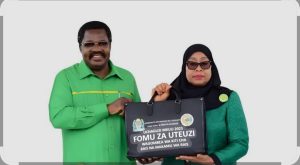
A predictable election, an uncertain future
With CHADEMA absent, and CHAUMMA and ACT-Wazalendo struggling to consolidate opposition energy, CCM faces minimal resistance in the 2025 general election.
For Samia, that likely means a smooth victory – but one shadowed by a legitimacy crisis. To her critics, the election is less a contest of ideas than a performance of continuity – a carefully managed show to preserve power while maintaining the illusion of democracy.
The irony of power
Five years after serving as running mates, Samia Suluhu Hassan and Salum Mwalim now stand on opposite sides of Tanzania’s political divide – both shaped by the ghosts of their former principals.
Samia, once Magufuli’s deputy, now leads a party haunted by his methods. Mwalimu, once Lissu’s deputy, now carries the torch of a movement struggling to survive Lissu’s absence.
Both represent Tanzania’s enduring dilemma — a nation oscillating between reconciliation and repression, healing and hostility, hope and fear.
As the October 29, 2025 election approaches, Samia faces the greatest irony of her presidency. She began as a symbol of change but has become, in the eyes of many, a replica of Magufuli.
The instruments of repression she once dismantled have been rebuilt in her name. The optimism she once inspired has faded into cynicism.
The 2025 election, then, is not just a political contest – it is a reckoning with Tanzania’s democratic soul, a test of whether the nation can still imagine a future beyond fear, and whether its leaders can learn from – rather than repeat – the mistakes of their past.


